Hindu mythology has a lot of stories that has marked the future for the religion and its practices. All the stories in the religion have its considerable evidences in the modern era making us wonder if the stories are really a “Mythology or History?”.
Well, talking of one such mythology is “The Mahabharata”. Based on astronomical information, this war occurred somewhere around 5000 years ago and caters as an important source of information on the development of Hinduism between 400 bc and 200 bc and is regarded by Hindus as both a text about dharma (Hindu moral law) and a history. The war of Mahabharata is said to have led to massive destruction and deaths, one of which includes the fall of the city Dwaraka. So now let’s begin with the story..
THE STORY OF LOST CITY OF DWARAKA
Lord Krishna (eighth incarnation of Lord Vishnu) when settled in Dwaraka, prospered it and made it known as the city of Gold. Lord Krishna, who was the key political reformer and a pacemaker in Mahabharata, later served as the Charioteer and a Guide to Arjun (prince of Pandava clan). Mahabharata is believed to be the biggest ancient war to have taken place in the world between Pandavas and Kauravas which took place as a result of dynastic succession struggle between two groups of cousins, for the throne of Hastinapura. The war occurred in Kurukshetra in North India and lasted for 18 days.
It led to a massive destruction of property and life. With about 393,660 chariots and charioteers, 393,660 elephants and elephant riders, 1,180,980 horses and horse riders and 1,968,300 infantry in the war, only 12 are known survivors.
As a result of death of all her sons, Queen Gandhari (mother of Kauravas) cursed Lord Krishna that the Yadav clan (clan of Lord Krishna) will be destroyed and perished the same way as Kauravas have perished. And this marks the sole reason of the fall of the great city. As quoted by Arjuna in Mausala Parva of Mahabharata, as he witnesses the submergence of Dvaraka, he describes it as:
The sea, which had been beating against the shores, suddenly broke the boundary that was imposed on it by nature. The sea rushed into the city. It coursed through the streets of the beautiful city. The sea covered up everything in the city. I saw the beautiful buildings becoming submerged one by one. In a matter of a few moments it was all over. The sea had now become as placid as a lake. There was no trace of the city. Dvaraka was just a name; just a memory.
Dwaraka is a coastal town in Jamnagar district of Gujarat. The rise in the sea-level in Dwarka is a scientific truth. Studies have proved that the sea considerably and suddenly rose to submerge the city. Harivamsha describes the submerging of Dwarka saying Krishna instructed Arjuna, who was then visiting Dwarka, to evacuate the residents of the city as the sea was going to engulf the city. "On the seventh day (of Krishna saying this), as the last of the citizens were leaving the city, the sea entered the streets of Dwarka."
The rise in the sea-level in Dwarka is a scientific truth. Studies have proved that the sea considerably and suddenly rose to submerge the city.
According to experts, there could have been three reasons why the sea entered the land. One, a change in the level of seabed, two, a massive earthquake and three, sudden increase in the level of sea water. Of the three, the last is the most plausible. If it was a change in the level of seabed, some remains of the "tearing off action" on the shore would be visible, which is absent. Earthquake can be ruled out as the structures have not collapsed because of the shake. The third reason
is most acceptable as a similar phenomenon had occurred in the shores of Bahrain, around the same time, as some recent findings indicate
Based on the correlation between the excavated structures and artefacts with the description of Dwarka in Harivamsha purana, and the fact that the carbon dating of artefacts fall around 3500BC, the same period concluded by many astronomical analysts as the period of the Mahabharata war and the submersion of Dwarka, it is more than reasonable to conclude that the excavated site near Bet Dwarka is indeed the legandary city of Dwarka.
Dwarka, as of today is still one of the best-studied underwater sites in India.
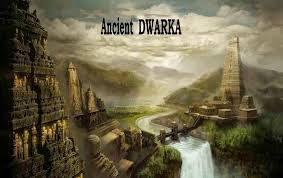
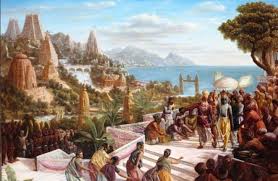
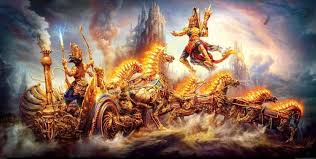
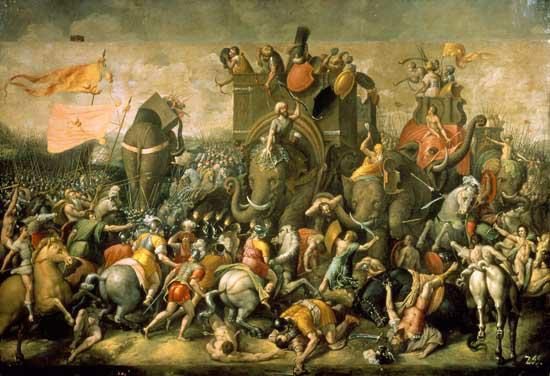
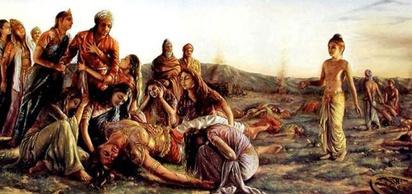
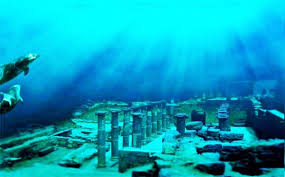
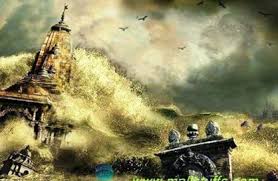
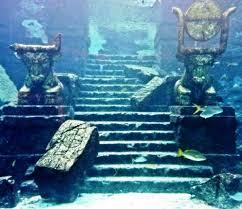
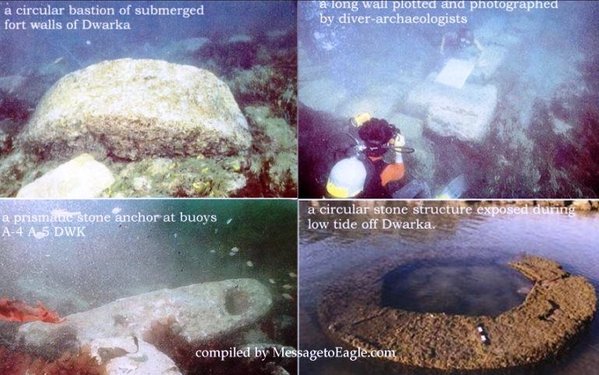
There seems to be repetition of some of the sentences...check it out
Ohh thanks